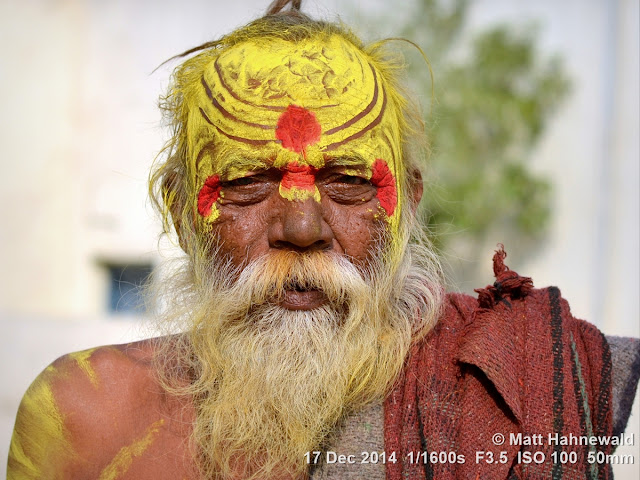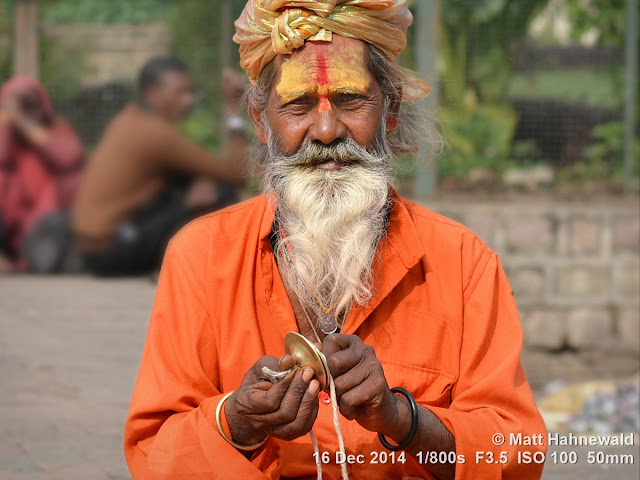Many sadhus and Hindu devotees prefer to wear sandalwood tilakas on their foreheads. The area in which the yellow paste is applied is between and above the eyebrows, called the third-eye
chakra aka ajna chakra. While a person's two eyes see the physical world, the third eye is believed to reveal insights about the future.
The ajna chakra is the area that most schools of Hinduism consider the entry and exit point of the soul aka jivatma, and the brain area for thinking, concentration and memory. Applying sandalwood paste aka chandanam here has supposedly a cooling effect, aids concentration, and increases mind power. The soothing and antiseptic sandalwood paste connects the sadhus to their intuitions, gives them the ability to communicate with the spiritual world, and helps them receive messages from the past and the future...
The preparation of the sandalwood paste is a sacred duty fit only for the pure, so it is entrusted in temples and during ceremonies only to Hindu priests aka Brahmins. The paste is prepared by grinding wood by hand upon granite slabs shaped for the purpose. With the slow addition of
water, a thick paste results, which is mixed with saffron or other such pigments to make chandanam. Chandanam, further mixed with herbs, perfumes, pigments, and some other compounds, results in javadhu. Both chandanam and javadhu are dried and used as chandanam powder and javadhu powder all over the Indian subcontinent.
“In the land of the blind the third eyed man is king.”
(Dean Cavanagh)
Portrait photographs of sadhus from Nepal in Matt Hahnewald's
Portrait photographs of sadhus from Tamil Nadu in Matt Hahnewald's










No comments:
Post a Comment